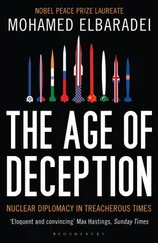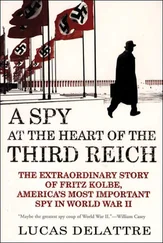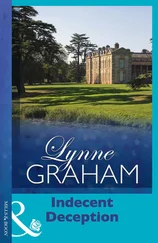In another blunder, Lockhart’s French colleagues confided in René Marchand, the Moscow correspondent of Le Figaro , in the bizarre belief that he was a spy for their government – which like the British and American ones was deeply alarmed by, and hostile to, the revolutionaries. Marchand, being in fact rather sympathetic to the Bolsheviks, immediately informed Dzerzhinsky. This added more details to those provided by the bogus Latvian ‘mutineers’. Dzerzhinsky learned that the coup was planned for 28 August at a Party meeting in the Bolshoi Theatre. The Latvian soldiers were to seize the entrances and train their rifles on the audience. Reilly and a small group concealed behind the curtains would arrest the Bolshevik leadership. One plan was to humiliate them by marching them half-naked through the streets of Moscow. But the plotters thought it safer to shoot them on the spot. Reilly, Marchand revealed, had promised the conspirators senior positions in the government of a future independent Latvia, to be set up under Allied protection. 21
Armed with the details of the plot, Dzerzhinsky went straight to Lenin. The problem was how to use Marchand’s material. Lenin came up with an ingenious suggestion to protect his source’s journalistic integrity. The French journalist was to write a confidential letter to the French president, Raymond Poincaré: nobody could blame a journalist for warning his head of state that his country’s spies were planning a ludicrously risky stunt. The letter would then be ‘found’ by the Cheka during a search of Marchand’s flat. Helpfully, Dzerzhinsky drafted the letter. For a few days, the Bolsheviks were content to watch the plot developing. But the assassination on 30 August of the head of the Petrograd Cheka, Moisei Uritsky (followed in the evening by a shooting that came within a whisker of killing Lenin himself) prompted the communist leaders to spring the trap. On 31 August eight Chekists raided the British embassy in Petrograd, shooting Commander Cromie, who bravely tried to delay the intruders to allow two of his agents to escape from the building. [45] as The Bolsheviks refused to allow the dying man a drink of water, or the embassy chaplain to attend to him. My suggestion to the British consulate in St Petersburg, when it opened in 1992, to name a prize or scholarship after this gallant officer met with a sorry lack of enthusiasm.
Lockhart and his assistant as well as the French consul-general were jailed and eventually deported, and 521 hapless Russians were arrested as ‘counter-revolutionaries’. Colonel Friede was shot. Reilly was sentenced to death in absentia, but had already escaped.
The fiasco highlighted a central, persistent, and unrecognised dilemma for Western intelligence services in their dealings with the Soviet enemy. Their mission was well described as ‘a mixture of intelligence-gathering, disruption, sabotage and assistance to British military forces’. 22But those elements are inherently incompatible. Watching in the shadows is one thing; twisting arms is another. It is hard for the same spy to do both. The tension between covert action and intelligence nearly cost the life of probably the most able British spy ever deployed against the Soviet regime.
Paul Dukes, a concert pianist from Bridgwater in Somerset, had honed his skills in evasion, deception and persuasion as a schoolboy, faced with the unpleasant necessity of dodging a predatory paedophile who was both a teacher at his boarding school and a friend of his father. A natural linguist, he had arrived in Russia in 1910 as a music student. Rejected for military service because of a heart condition, he spent much of the war years working for a government-financed information service called the Anglo-Russian Bureau. In 1917, he was summoned to London for a meeting with SIS, in those days an outfit run by eccentric upper-class men with a dilettantish approach to espionage (cynics might say nothing much changed in subsequent decades). Dukes was told:
As to the means whereby you gain access to the country, under what cover you will live there, and how you will send out reports, we shall leave it to you, being best informed as to conditions, to make suggestions. 23
After brief training in invisible ink and cipher, Dukes was dispatched back to the most dangerous place in the world for a foreign spy, to live and work undercover as an illegal – rather as Donald Heathfield and the others were to do in America seventy years later. But whereas they exploited the vulnerabilities of an open society, he had to work in a police state, under the noses of the fearsome Bolshevik secret police, the Cheka. He was an astonishing success: in 1919 he was the most effective, and quite possibly the only, SIS officer inside Bolshevik-controlled Russia. He was running a network of agents in Petrograd, 24collected in part via a military canteen in which he had installed himself as a part-time pianist (disguised as a tattily dressed and limping tramp). At other times he managed to pass as an official of the Cheka itself, as a member of the Communist Party, and as a Red Army soldier. The result was intelligence of a stellar quality and quantity. 25Dukes had not only established a network of informers, civilian and military, throughout the city and its great port. He had penetrated the top Bolshevik leadership of Petrograd to such an extent that he was able to transmit to London translations of the highly secret minutes of their meetings in full. But the star spy was in increasingly desperate straits. The tightening Bolshevik bureaucratic controls on movements, food supplies and residency made maintaining his aliases and safe houses increasingly difficult: getting the right papers was tricky and having the wrong ones fatal. The Cheka knew the British spy was at large in the city and had on several occasions nearly caught him. Money could help – but SIS had sent him ineptly forged cash: when the fake banknotes got wet, the ink ran. His priceless intelligence was useless unless it could reach the increasingly frantic politicians in London but getting across the border was difficult: in one two-week period in the summer of 1919 no fewer than six couriers had been captured. 26
Cumming tasked a young naval lieutenant, Augustus ‘Gus’ Agar, with rescuing Dukes using lightweight torpedo boats. These contraptions, plywood shells powered by aircraft engines, were the forerunners of the vessels that would be used to send SIS agents to the Baltic states twenty-five years later. The ‘eggshells’ (when their delicate engines worked, which was not always) could travel at the then astonishing speed of over 40 knots. The mission was dogged by bad luck, communications breakdowns, security breaches, meddling from other officials, and suspicion from Agar’s Finnish hosts (who had no desire to provoke the Bolsheviks by supporting madcap British raids and spookery). Agar’s main ally against these odds was Admiral Sir Walter ‘Titch’ Cowan, the commander of a British naval squadron that was helping the Estonians beat off their various foes, though its two light cruisers and ten destroyers were outgunned by Russia’s much heavier warships: the Oleg , a heavy cruiser, and two battleships, the Petropavlovsk and Andrei Pervozvanni . [46] at Both Russian battleships still had their Tsarist-era names with religious allusions: ‘Peter and Paul’ and ‘Andrew the First-called [apostle]’. A French naval force was also in the Baltic but unable to take part in hostilities against the Bolsheviks for fear that the sailors would mutiny.
In theory, Agar’s mission was solely the clandestine exfiltration of Dukes from Petrograd. He and his crew wore civilian clothes, and turned up in Helsinki pretending to be speedboat salesmen. But they had also taken a couple of torpedoes (launched in a hair-raising manoeuvre over the back of the craft, travelling in the same direction: the helmsman had a few seconds to turn away from their path). And they had naval uniforms on board, to be donned in the event of real warfare.
Читать дальше












